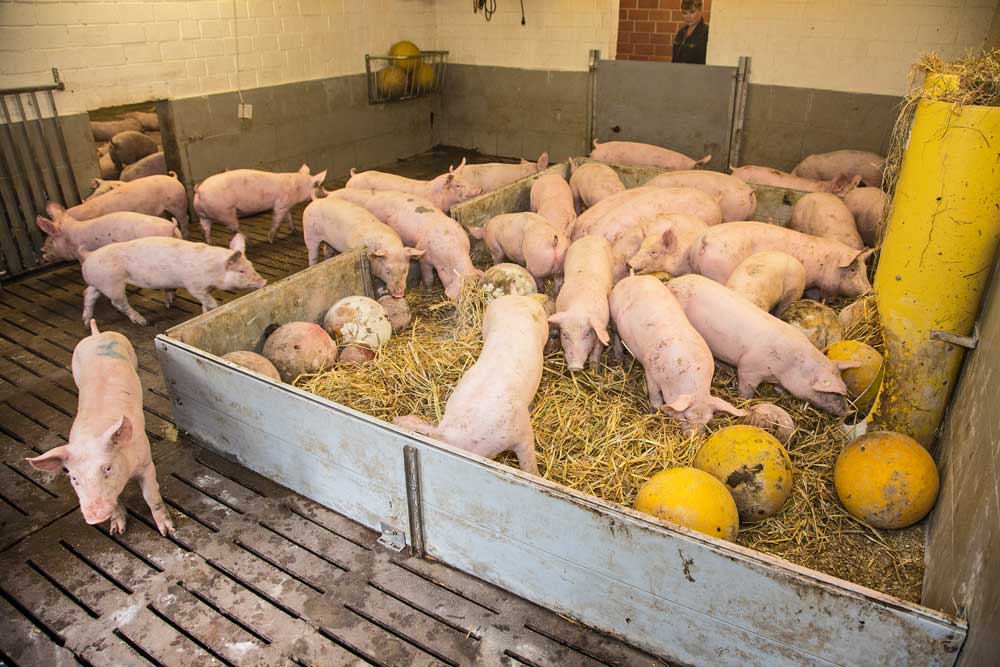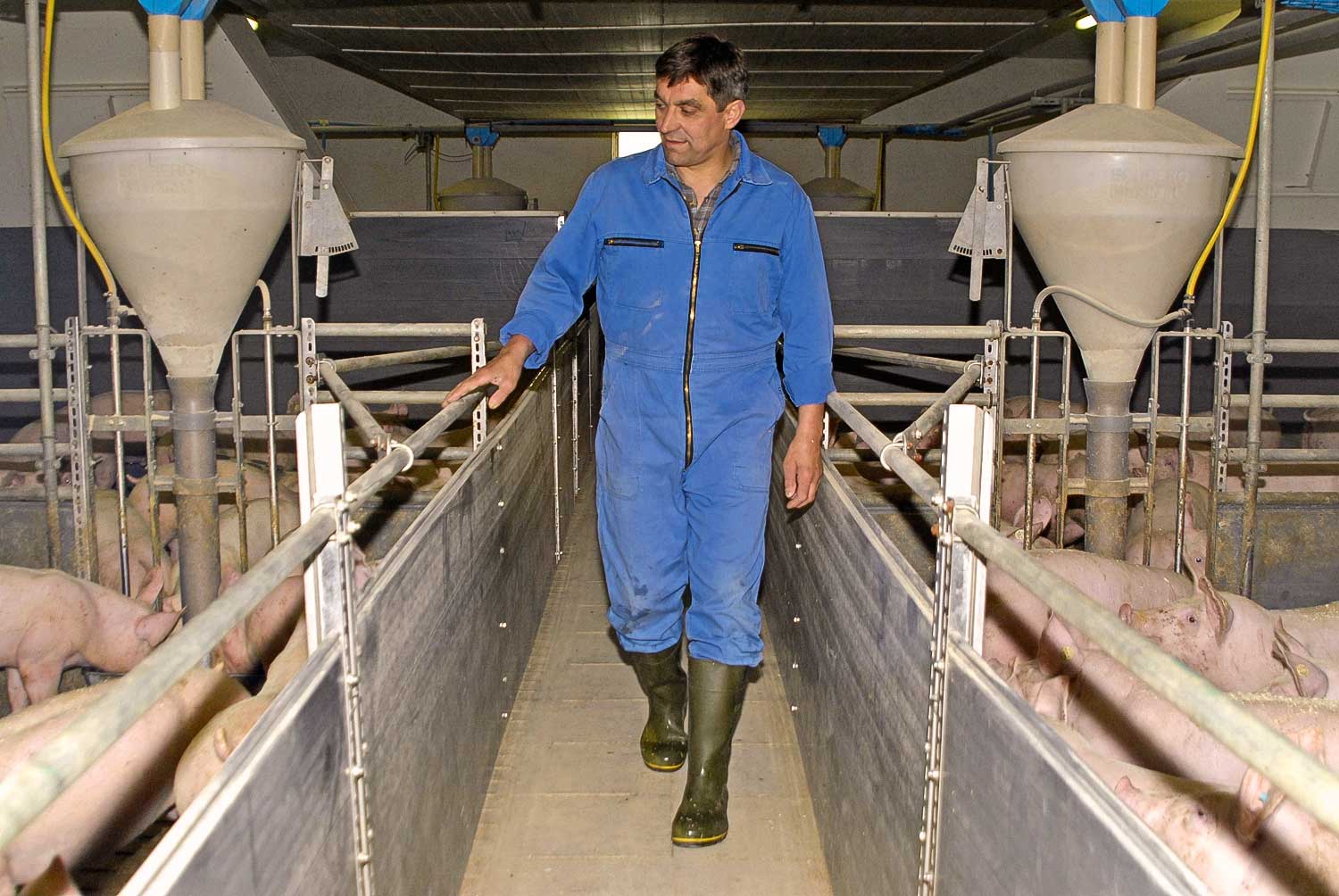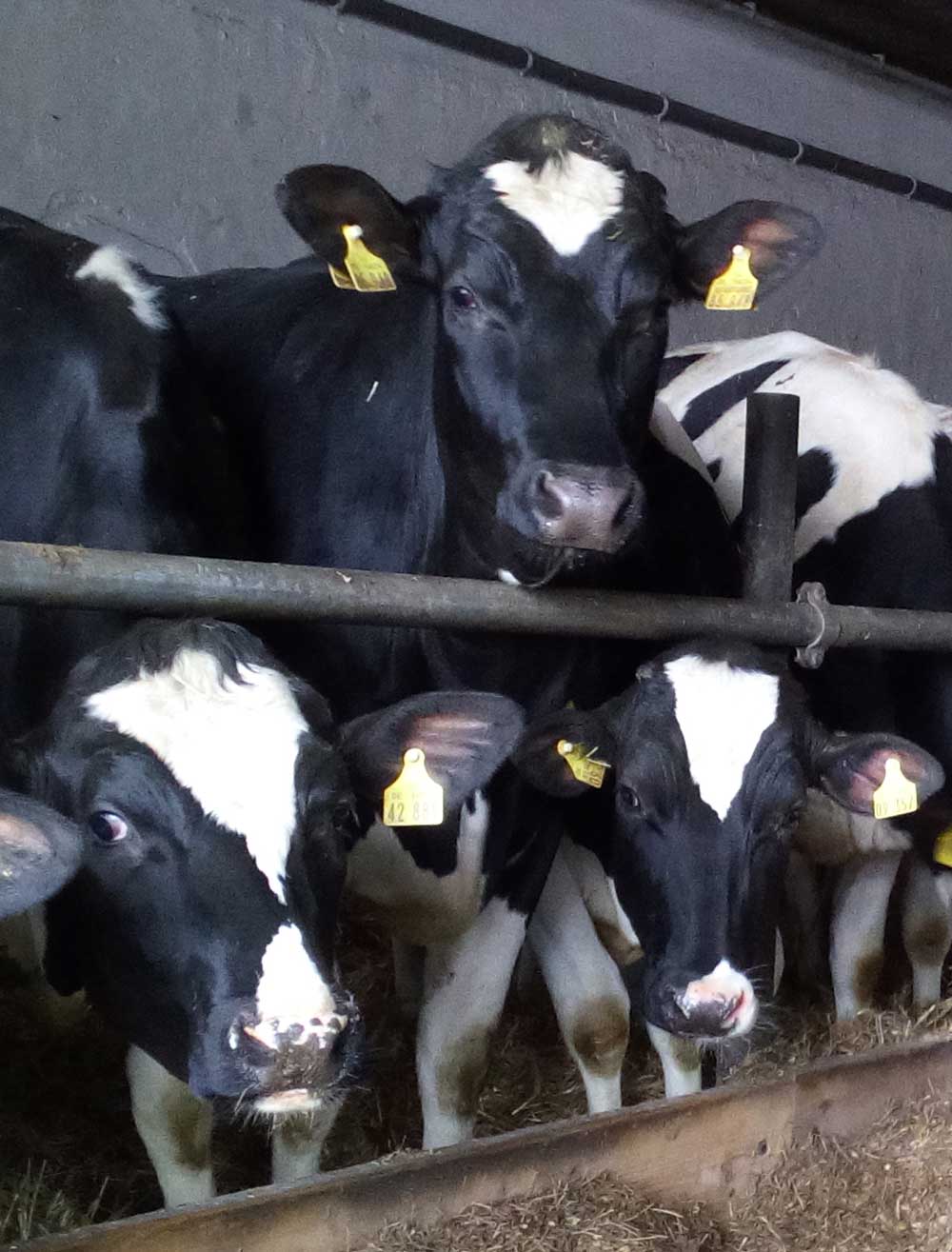Animal welfare: A question of morality
Western society seems to have ignored the subject of farm animals for a long time. Now, it’s come all the sharper into focus, and will remain so. When thousands take to the streets in the ritual Green Week demonstration under the slogan »Wir haben es satt« (We ‘ve had more than enough of this), these demonstrators document a broad interest in questions relating to agriculture and commit themselves to oppose »factory farming« or »mass animal production«.
What is »factory farming« anyway?
For years now, part of the repertoire of farming professionals is to ask dismissively what on earth the questioner means by »factory farming«. A study from Göttingen University adds real numbers to the catch phrase: For consumers, factory farming begins with 500 head of cattle or 1000 pigs or 5000 hens. The Green Party in Thuringia State Parliament has another definition, based on an assessment referring to federal building regulation threshold values that suggests 600 cattle, 560 sows, 1500 feeding pigs, 15,000 layers and 30,000 broilers.
Do the protesters against factory farming know such numbers in the first place? Must they know? Naturally not. What drives them onto the streets are evaluative concepts.
»Factory farming« is a so called »thick concept« in the terminology of speech philosophers: a term that includes a description but also an evaluation concept. Such as, for instance, »blowing money« means not only spending a great deal of cash, but also spending it recklessly (letting it blow away). The meaning of such terms is formed through word play to include concepts: reproaching, insulting, protesting, complaining, activating, analysing. Definitions are seldom required. And (almost) never scientific definitions.
There is little sense in referring to any precise definition for factory farming......
...... in order to use this to show that people don’t know what they are talking about. Highly specialised livestock production, large numbers of one type of animal in a single location, a high degree of technology, managing animals so that they integrate with their technological environment, a lesser economic value put on the single animal and therefore a limited evaluation appreciation of animal individuality: People mean all of this when they speak of »factory farming«, usually with derogatory gestures. The question whether negative welfare results for the individual animal when managing the animals in large numbers (i.e. in factory mode) may be ignored here. Critics take this assumption as given. And that’s exactly what they mean by factory farming. A description that apparently is already fully understood by large sections of the population. »Towards understanding through speech is required not only agreement on definitions, but also (odd as it may sound) on judgements«, said L. Wittgenstein. In and through their judgements, people are able to understand one another. And this is what they do. The arithmetical number of animals is not their real problem. Instead, it’s the demise of the individual animal into an anonymous mass.
Livestock farmers react to polemic against their livelihood with increasing irritation.
In order to appreciate the impact involved, it pays to take a closer look at the farmer’s motive. The conflict is seen in the first place as an argument about a particular form of agriculture. It can, however, also be interpreted as a disagreement over the moral status of animals. In this publication we have already discussed the cultural and philosophical background hereto. Here’s the hypothesis: »The theme animals apparently activates we humans now much more than realised before. The depth as well as the breadth of this conversion makes it appear very unlikely that the present hype over animals will simply fade away«. This has proved correct. In fact, the argument tends to have become more intense.
Over decades, our society has banned from day-to-day life more and more aspects of animals’ role in providing food. In fact, in every sense there is hardly any association with farm animals nowadays: only with their products. Now, people are more interested again, but with a completely different image in their minds about what an animal is. There’s no point in dismissing such images as naive; because they are not. People will not be dissuaded either. Very generally speaking, these are perhaps the ones that nowadays tear open barn doors to see what’s happening to the animals inside
A broadly applied »solidarity« allows people to empathise even with animals they have no connection with.
The statement from livestock farmers that they’re the real professionals and that, after all, they own the animals is no longer convincing. Swept along by an enormous moral and social reappraisal of animals, their human contemporaries feel they have the right and the duty to establish appropriate conditions for animals, including farm animals. In this role they possibly imagine they have more affinity to the animals than do the actual owners. If the comparison is permissible: just as nature and the environment became a collective value to be protected starting in the 1980s, nowadays farmers are no longer the sole arbitrators of their animals’ welfare, or lack of it. Protection of animals, as cited in Article 20 of the German Constitution, stands in this respect quite consequently for protection of the natural living requirements. This, after all, is what society no longer wants to see left to the lone farmer’s responsbility.
Society is extraordinarily heterogenous in matters concerning animals and animal welfare.
The relationship to animals and how we treat them sometimes varies strongly. Thus, an estimated three times as many women as men are vegetarian. There are surroundings in which the message of even egalitarian animal rights is well established right across the board. And other areas where nothing much has been achieved at all. Greatly simplified, we find milieus where it can be very hard to imagine still being able to bite into a cutlet. And other sectors where it’s equally difficult to imagine anyone sparing a thought about it.
Whether one of these philosophies will become completely accepted, is questionable. Perhaps it will remain a schism in our society that may even deepen. As mentioned, this has very deep roots in philosophical positions that do not necessarily have anything to do with agriculture, but instead with the relationship to animals in general. Nor does it indicate that the practice of farm animal production has no influence on this: the larger and more noticeable the deficits (including animal protection aspects), the easier it is for animal protection organisations to select their »targets«. The fewer improvements made in the welfare aspects of farm housing, and the longer it takes to establish improvements, the more plausible will be the fundamental rejection of modern or »industrial« animal production. An animal production system that frustrates expectations of welfare progress, even only partly, will be seen as collectively responsible by those on the outside.
In farming jargon, the term »consumer« is fondly quoted. More precise would be to use the description »citizen«.
The most obvious reason is that many activists in this field are no longer consumers of milk and definitely not of meat. Consumers can express their power in retail outlets. Citizens exercise political power. And this is a difference that can be decisive for the future of livestock farming. The distribution of public funds, the form of infrastructure, the establishment of legislative frameworks, the acceptance and relevant support of livestock farming as socially legitimate livelihood - all this depends not on the buying behaviour of consumers, but instead on the acceptance by citizens of the appropriate policies.
Securing such acceptance will increasingly be agriculture’s challenge. The implicitness through which the production of food, including that from animals, has secured a privileged position in society for farmers no longer applies.
Society’s union with agriculture is through the latter’s production of essential goods.
»The major role for the farmer remains as provider of healthy and high-quality foods for the citizen«, is what we hear from farmers nowadays. As long as it can be justifiably said that the livestock farmer feeds me, the farmer can ask for my encouragement and support where disadvantages have to be overcome in providing this service.
But what if this agricultural service for society changes in structure? For instance, from a purely local supply situation to a global material flow of meat and milk? As with other farm products, meat, milk and eggs are arbitrary trading goods, entirely exchangeable and with few characteristic aspects. We can look at things this way (even if it’s unfair): German livestock farmers transport millions of tonnes of biomass in the form of animal feed from one or other corner of this planet to Germany where it is fed to millions of farm animals. Only part of the livestock products so produced is actually eaten in this country. The rest is sold to other parts of the world. A further product from this process is manure. This remains here. In such a situation, livestock farming causes problems that are not simply the result of producing food for domestic consumption. This form of livestock farming could take place anywhere in the world, just like any other business sector in the global economy. Why therefore should it be accepted by citizens that this »industry« produces right here in our vicinity? The elementary regional advantage in this case loses meaning. What this industry brings to us here, and then leaves here, are the problems of animal protection, manure, sustainability and fairness.
The importance of understanding.
A sector of the economy that delivers to society a whole bundle of problems cannot simply assume its continuous sympathy. Especially not where means of production in this sector represent a factor increasingly valued within the society, a factor such as animal welfare.
What can we do?
An agriculture that wishes to keep livestock in the environment described above, has to offer something special to society. Something believable: communicating that not only are they interested in the concerns of their fellow citizens but that they themselves also take these concerns seriously, strive for answers and seek solutions where required. All forms of the dialogue are important. Not only the exchanges involved, but also all subsequent actions aimed at consequent protection of animals and their welfare.
Perhaps this approach may even generate long-term locational advantages. For instance, where it can be clearly established that good livestock management under ambient conditions can be better achieved in one location than anywhere else. As far as citizens are concerned, means of measurement here are the extent of environment protection and the well-being of the animals involved. Worthy of note here is that the latter point has to be considered independently of production factors. The number of animals doesn’t automatically limit the possibility of managing them with due regard to welfare. But the size of unit may well influence most of the other problems – especially the themes »sustainability and manure«.
Modern societies are interested in where their food comes from, particularly where animals are involved. But in a modern pluralistic society, not everyone is interested, nor at the same time or to a similar extent. It could be that perhaps only minorities within a society will continue to be interested. But such minorities are also extremely influential.






